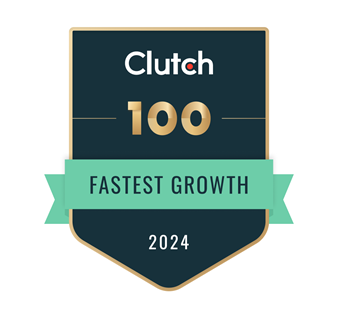Six Stages of Successful HR Transformation Using .NET Technology
What is HR digital transformation? Definition, Strategies, and Challenges
As the name implies, digital transformation is the transition of an organization based on traditionally manual processes to one that has technology at its core in all its functions: both internal (employee-facing, operational) and external (customer-facing). Digitization leads to transformation. Digitization itself does not lead to transformation. “Digital transformation is like transforming a caterpillar into a butterfly, but when done incorrectly, it is all you get: a really fast caterpillar.” - George Westerman.
In addition to being a process, digital transformation is an outcome. In addition to being a revolutionary change, digital transformation is also an evolutionary growth process. The transition to technology-driven business involves more than digitization: it involves a shift in the culture and mindset of an organization as well. In an age where technological disruption is the norm, HR needs to undergo a digital transformation like every other part of the organization.
In the coming year, digital transformation budgets will increase by 25 percent, according to a Deloitte survey. HR teams that are still relying on Excel sheets to collect and analyze data must move to automation, and quickly, as artificial intelligence (AI), blockchain, machine learning, automated performance management, and much more are on the horizon. The purpose of this primer on digital transformation is to explain what digital transformation in HR means, what it entails, and the challenges businesses face when they attempt to implement it.
The importance of digital transformation
HR functions can be digitally transformed and data-driven using a digital transformation.
HR teams are transforming both HR operations and workplaces, according to Deloitte's Human Capital Trends report.
Therefore, HR digital transformation is not just about HR, it's a metamorphosis that affects the entire organization. The entire organization must be affected in order for HR digital transformation to be successful.
Why undertake Digital Transformation in HR?
-
Automate repetitive tasks to save time
-
For a better employee experience
-
Free up time to strategize and ultimately benefit the bottom line of the business
What is the goal of HR’s digital transformation?
There may be multiple objectives in the context of digital transformation in HR:
-
Automating repetitive tasks allows you to save time by reducing the time you spend on them.
-
Maximizing employee satisfaction should be a priority.
-
With more time available for strategy, the bottom line of the business can benefit.
All aspects of HR, such as payroll, benefits, performance management, learning and development, rewards, and hiring, are guided by data in HR digital transformation. To lead HR digital transformation, HR teams have to do two things:
-
The organization is in charge of its own transformation by automating and utilizing data-driven, digital processes.
-
In collaboration with the IT department, human resources is responsible for leading organizations toward digital transformation and supporting their continuous digital evolution. It is critical to equip employees with a digital mindset in order to enhance productivity and improve processes.
What Are Digitization, Digitalization, and Digital Transformation?
All three terms, digitalization, digitalization, and digital transformation: Each step leads to the next. They are often used interchangeably, but have subtle differences in meaning.
Each step builds on the previous one. To know where you are on the digital transformation journey, it is essential to identify these differences.
1. Digitization
Digitization is the transformation of manual processes into digital ones. For instance, digitizing the performance records of employees from ten years ago.
Digitalization involves transforming into a digital-led organization, one that leverages digital tools in its daily operations. The goal of digitalization is to create a culture in which technology is used to run a company. AI impacts the HR industry, for instance, in a real and tangible way. AI is most effective when it is used by those who:
-
Recognize that artificial intelligence can be a benefit to their job, not a liability.
-
To interpret the data presented, you need to possess critical thinking skills.
-
Develop a HR strategy that delivers business outcomes using creative thinking skills.
The ideal example of digitalization is when an organization is led by artificial intelligence and leveraging insights offered by the technology into key processes.
2. Digital transformation
Digitization and digitalization are both part of digital transformation. These processes are automated and a culture of automation is developed. Additionally, it goes further, questioning whether any processes are necessary at all, eliminating rote tasks that were valuable when processes were manual but do not belong in a digital company. The transformation journey involves identifying problems that need to be solved and utilizing technology to solve them in the most efficient way possible. Changing the mindsets across the organization begins with the leadership and flows down to the rest of the organization. As a result of digitization and digitalization, an agile organization is created, ready to adapt to rapid technological developments.
The Why of HR Transformation
To begin, let's go back to the beginning. Whatever the HR transformation, it must have a clear objective regardless of whether it is a digital transformation or not. Business cases must accompany the HR transformation no matter how big or small.
There are still far too many companies that make the mistake of succumbing to peer pressure and following in the footsteps of their competitors who are all following in the footsteps of digitalization.
At BitsOrchestra, we don't believe it's a good idea to digitize HR processes simply as a means to digitize them. The business is unable to meet its needs due to costly (expensive) technology. This is clearly counterproductive to organizational transformation.
Which factors are necessary for a digital transformation to succeed?
UNLEASH BitsOrchestra experts to answer this question, here's what they said:
Examples of HR digital transformation
It is (slowly) becoming clear that the human resources department is undergoing major transformations, to mention just a few:
BitsOrchestra's hiring process undergoes a radical change in the 9 must-read digital HR and HR tech articles of 2021. A few of the ways the company is digitizing recruitment involve social media, online games, and artificial intelligence.
Another example is Cisco. Along with its YouBelong@Cisco app and Ask Alex, Cisco organizes hackathons to develop new HR products. The former is intended for onboarding, and the latter is a voice command app that answers HR questions, such as holiday policies and expenses.
Digital HR solutions are IBM's specialty. The American technology firm developed a digital learning platform for its employees in addition to many other initiatives.
The stages of HR transformation
Let's move on to the more serious part. We will examine digital HR transformation in stages. Digital transformation doesn't happen overnight. Change doesn't happen overnight.
We will try to summarize key thoughts about HR digital transformation in the following article.
Solis' report for Altimeter outlines six steps to digital transformation:
-
This one is pretty self-explanatory - business as usual.
-
In order to promote digital literacy and creative thinking, the organization conducts a variety of experiments.
-
When business processes are formalized, they become more relevant. Initiatives that are irrelevant to the business shouldn't be supported by leadership - but it doesn't always work that way.
-
Collaboration has strategic benefits when viewed from an individual's perspective. They can share insights and create new strategic roadmaps through collaboration.
-
The company's strategy and operations will be guided by a team of digital transformation experts.
-
The digital transformation has become the new business as usual, and a new ecosystem has emerged.
An organization's mindset - or rather the members of the organization - has completely changed after a digital transformation.
How do you wonder? I'll tell you.
Digital thinking has become the norm. Technology and digital platforms alone are not sufficient. In this way, their business is aware - and accepting - of the constant changes that face it in the 21st century and how it needs to adapt to them in order to survive.
Enabling digital transformation in HR
Implementing HR's digital transformation will help you achieve these goals:
-
Decide who will be responsible for implementing the transformation
-
Work on the digital traces with additional resources
-
Determine a timeline within which you will prove the effectiveness of a certain tool
-
Identify the processes that will be phased out when a digital platform is interpreted
-
Let G-Suite know what you need in terms of resources
-
Prepare your team for the change
-
Create a culture of digitalization
How to get started with HR digital transformation
While HR digital transformation sounds great in theory, it's hard to take the first step. Below are three keys to success:
-
Decide on a clear goal
-
Engage everyone
-
Keep things simple
-
Prioritize ideas
-
Assess the situation
-
Take into account cultural aspect
Let's go over them one by one.
1. Define your goals clearly
It is imperative that you have a clearly defined goal that makes sense from a business perspective before starting a large-scale transformational HR effort. Employees are usually looking for solutions to problems they face.
For that reason, employees must always be seen as end users when it comes to HR transformation. Also, this is why your employees should have the opportunity to test new technologies before implementing them.
2. Get everyone on board
Employees, executives, and everyone in between are involved. You will need all the assistance you can get in order to transform HR digitally.
3. Don’t overcomplicate things
Your HR processes should be digitalized (selection & recruitment, onboarding & inboarding, training & development, payroll management, etc.). Discuss this with your employees and C-suite. Identify what is most important to them by consulting with them.
4. Prioritize ideas
Undoubtedly, a long list of ideas will be generated. Arrange them by importance and effort. The first reason to digitize business ideas is that they are business-impacting, and the second reason is that they are expensive and time-consuming to implement.
Start with ideas that are low effort and high impact. When you build the business case, implementing digital HR is simple.
5. Assess performance
It is great to experiment with digital technologies, but unless we see their results, they are not very meaningful. To determine which technologies will succeed, we need to analyze their results.
Only by developing technological solutions to real problems can we progress.
6. Culture is important
Transforming HR digitally requires more than technology. It also requires transformation of the whole organization. The importance of keeping everyone on the same page cannot be overstated. Organizational culture plays an important role in this.
From your new employees up to your top executives, every member of your team needs a deep understanding of digital - in its broadest sense.
On a final note
A digital transformation of HR is not optional. Consequently, employers and human resources departments are finding it difficult to keep up with what's happening in an age where every aspect of life is digitalizing rapidly, where users-turned-employees assume that almost everything they do is digital.
Take a look at what the employees of the Timken Company did. A cloud-based HR solution was implemented to support multiple HR processes at the company. Some of these processes include recruiting, payroll, succession planning, etc.
As a result, the company could pull operational reports efficiently, access business intelligence more easily, and increase employee engagement. Does it get any better than that?
Author
Nataliya Oteir


_1.jpg?width=270&height=270&ext=.jpg&maxsidesize=338&resizemode=force)








